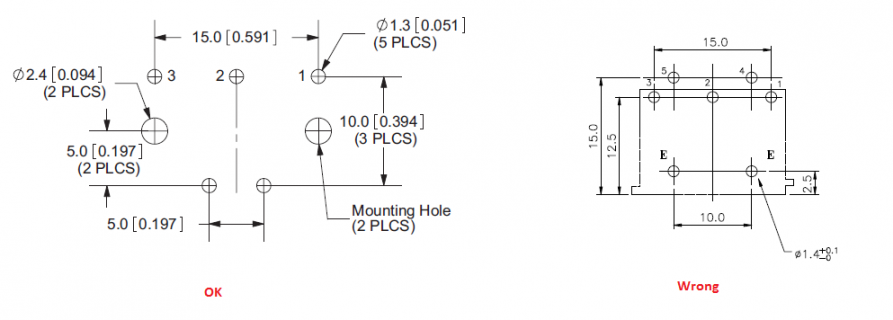Hi all,
My friend wants me to help him build the PJRC MIDI demo board, made famous here: https://www.pjrc.com/teensy/td_libs_MIDI.html
He picked this because the board design is ready-to-go. All he really wants to do is translate/filter MIDI messages
from the IN port to the OUT port, so even this board is a bit overkill. I already wrote such a thing for USB MIDI on the teensy, so it ought to be straightforward to plug that software into this hardware. But I'm electronically naive, so I have a couple parts questions. When I look up this stuff on Digikey, I'm unsure what to buy:
* I can see the values for the resistors and the caps ... does size matter for those? How many milliwatts can MIDI signals be?
* What kind of diodes should I use in the diode spots? One is a zener, but what specs? And what is the other one?
* Is there a part-number for the specific DIN connectors used?
I'm willing to bet this info is somewhere in this forum, but I can't seem to find it with any of the searches I've tried. Much obliged for any help!
My friend wants me to help him build the PJRC MIDI demo board, made famous here: https://www.pjrc.com/teensy/td_libs_MIDI.html
He picked this because the board design is ready-to-go. All he really wants to do is translate/filter MIDI messages
from the IN port to the OUT port, so even this board is a bit overkill. I already wrote such a thing for USB MIDI on the teensy, so it ought to be straightforward to plug that software into this hardware. But I'm electronically naive, so I have a couple parts questions. When I look up this stuff on Digikey, I'm unsure what to buy:
* I can see the values for the resistors and the caps ... does size matter for those? How many milliwatts can MIDI signals be?
* What kind of diodes should I use in the diode spots? One is a zener, but what specs? And what is the other one?
* Is there a part-number for the specific DIN connectors used?
I'm willing to bet this info is somewhere in this forum, but I can't seem to find it with any of the searches I've tried. Much obliged for any help!


